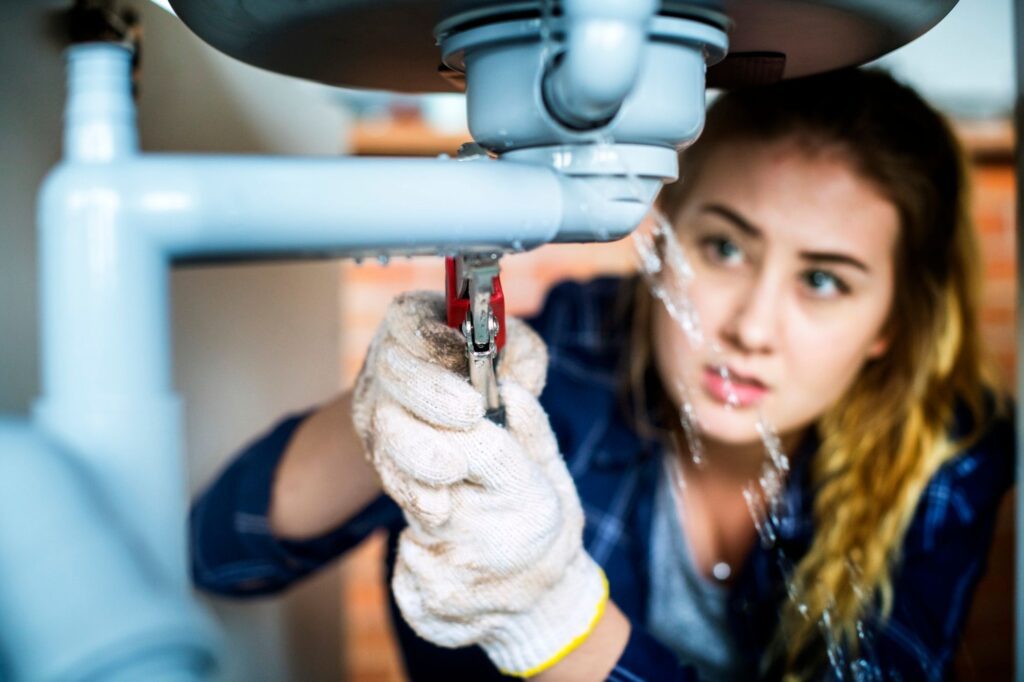The Problem With Moisture In The Home
All homeowners encounter a moisture problem at one time or another. It could be due to an underperforming ventilation fan, leaky pipe under the sink, or suboptimal thermostat setting in the winter. Whatever the source, it’s essential to address these moisture problems quickly. Otherwise, they could lead to water damage, mold, poor air quality, and myriad other unwelcome issues. Below, we’ll go over a few common sources, how to prevent moisture, and the hazards it could create if not properly addressed.

Where Does Moisture Come From?
Unfortunately, our day-to-day behaviors are often leading sources of home moisture. In fact, by performing activities such as preparing food, doing laundry, and taking showers, the average family produces over eight liters of moisture a day. There are also many ways it can make its way inside your home from outside. A few common sources of indoor moisture include:
- Poor ventilation in the bathrooms, kitchen, etc.
- Plumbing leaks
- An excessive number of houseplants
- Leaky roofs, flashing and siding
- Indoor hot tubs, saunas and whirlpool bathtubs
- Insufficiently maintained gutters and drains
- Soil diffusion — common in crawlspaces and unfinished basements
Identifying the source is the first step in fixing a moisture or high humidity problem. That being said, moisture is unavoidable in some areas of the home. The solution is to manage it as best you can by cleaning and maintaining the space. That way, it doesn’t accumulate into standing water, spread out and cause damage or become the perfect environment for mold.
Preventing Moisture Problems Before They Happen
Homeowners should understand that unaddressed moisture problems are one of the leading threats to the house’s structural integrity. Avoiding them requires preventative action. For starters, the humidity levels should remain between 30-50% throughout the year. Maintaining this level not only helps protect the health of your household members, but the value of your home as well. Other defensive measures relate to home maintenance are listed below.
Repair Bad Plumbing ASAP
Leaks happen. Whether it’s due to faulty installation, malfunctioning fixtures, defective appliances or aging pipes, plumbing issues pop up from time to time. To ensure they don’t get out of hand, homeowners are encouraged to keep an eye out for changes. These could be an odd, musty smell, a higher-than-average water bill or a yellow spot on the ceiling. When such changes are noticed, handle them promptly. Often, homeowners can resolve such issues, however, professional services may be required to properly diagnose and fix them.
Ensure Proper Ventilation
Another prevention tip is to improve ventilation. Fans that vent to the outside are necessary for rooms with moisture-producing activities. By running them as needed, they help bring fresh, healthy air into your home while circulating warm, moist air out. Ceiling fans and open windows are also effective in increasing air circulation. If the windows are painted shut or no longer operable, consider upgrading to new windows for home ventilation and improved energy efficiency.
Utilize Dehumidifiers
An effective method to controlling moisture is to use dehumidifiers and air conditioning. Designed to remove excess moisture in the air, dehumidifiers may be integrated with your HVAC system or smaller models you let run in the basement or other problem areas. Be sure to opt for energy-efficient models — such as ENERGY STAR certified — to keep electrical waste to a minimum. There are also natural ways to reduce humidity, such as introducing epiphytes and other plants which absorb moisture from the air.
The Possible Consequences of Moisture in Your Home
Maintaining an ideal indoor humidity level should be at the top of every homeowner’s list. Doing so helps everyone living there feel more comfortable while also avoiding potential health complications. What’s more, it can help deter structural damage, both in and out of your home. Possible effects of too much moisture and subsequent mold growth include:
- Diminished air quality
- Coughing, sneezing, wheezing and upper respiratory irritation
- Worsening symptoms for allergy and asthma sufferers
- Damaged weatherstripping
- Peeling paint
- Deterioration of drywall, flooring or subflooring
Implementing moisture-preventing measures can do wonders in controlling humidity and keeping your home and family safe from these threats. The key is to act now.
Want additional tips on preventing moisture in your home? Check out the accompanying resource for further information.
Infographic provided by Feldco, new windows for home
Author bio: Dave Cook is the official spokesperson for Feldco and has been with the company for more than 20 years. He has served many roles and has been pivotal in Feldco’s growth and expansion. Cook is a home improvement expert and loves helping people transform their homes.






